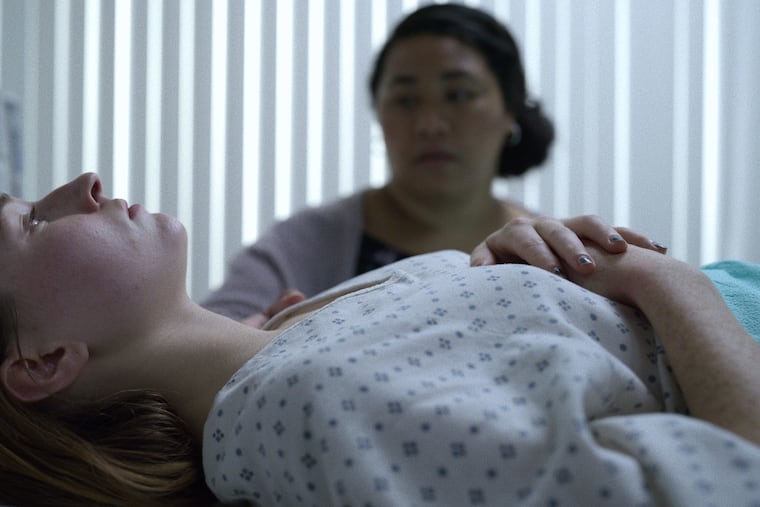What Netflix’s ‘Unbelievable’ can teach us about sexual assault and PTSD
The show has garnered a lot of media attention for its unflinching portrayal of Post Traumatic Stress Disorder following sexual assault, specifically for highlighting some of the less obvious symptoms.

Last month, Netflix released Unbelievable, a crime series based on the real-life case of a rape victim the police refused to believe.
The show has garnered a lot of media attention for its unflinching portrayal of post traumatic stress disorder (PTSD) after sexual assault, specifically for highlighting some of the less obvious (yet common) symptoms.
One in six women will experience attempted or completed rape, and one in 16 women describe their first sexual experience as nonconsensual. The implications of such trauma rest heavily upon how a person’s brain processes it, which is why it’s no surprise that 50% of sexual-assault survivors develop PTSD.
Why are some more susceptible to developing PTSD than others? Because we all have a psychological immune system — shaped by our biology, environment, and coping style — that fights off stressors and trauma. PTSD is born and grows in the coping style of avoidance — of memories and emotions related to the trauma, of people, places, and things that remind them of the trauma or that now feel dangerous. The aftermath and reactions of others are particularly relevant to the post-traumatic avoidance seen in sexual assault because it can produce immense shame. It’s not uncommon for PTSD sufferers to find themselves stuck in a vicious cycle of shame, reckless behavior, and emotional numbness after their assault.
We are better prepared to help ourselves and loved ones break this cycle by understanding how it manifests. Below are three common, yet often overlooked, manifestations of PTSD in sexual-assault survivors:
Skewed belief system. Much of the life disruption that accompanies untreated PTSD comes from the poor self-image that emerges after experiencing the horror of being sexually violated. It is quite common for survivors to believe that the assault was in some way their fault, not significant, or that they should have maintained more control over the situation. Society’s long history of minimizing and victim-blaming contributes to such beliefs. Humans also have an innate drive to be self-protective. Believing something horrible happened to you because of your own doing is strangely comforting because it provides a false sense of control for the future. Beliefs of self-blame combine with irrational beliefs about safety and one’s ability to cope with life stressors, setting the foundation for a pattern of self-defeating behavior.
Sexual promiscuity and reckless behavior. While many survivors experience a fear-based aversion to anything sexual, others respond through recklessness and promiscuity. The root of this response is a bit more complex than fear. Sexual assault often leaves survivors feeling powerless, worthless, and out of control. Thus, many seek to regain power by using their sexuality as a vehicle to make what happened to them “not a big deal.” If sex isn’t a big deal, then what happened wasn’t a big deal, right? This response is particularly relevant when a person’s first sexual experience is assault because it completely hijacks one’s understanding of sex, consent, and self-worth. This is exacerbated by another common post-traumatic phenomenon: a broken “danger-meter.” Trauma distorts beliefs about safety and danger, putting survivors at risk for continued reckless or promiscuous behavior in potentially dangerous scenarios.
Substance abuse and behavioral addiction. Sexual assault overtly disrespects a person’s body. Many survivors cope by engaging in behaviors that disrespect or harm one’s own body. Furthermore, PTSD is statistically correlated to substance abuse and other behavioral addictions (gambling, eating disorders, cutting, etc.) that serve to numb and distract from emotional pain. Because PTSD is the byproduct of an unprocessed traumatic event, the brain will continue making (ineffective) attempts to process it. Many describe the memories and emotions related to their assault as recurrent and intolerable. Substance intoxication or food control allows sufferers to experience temporary relief or a sense of control. This can become reinforcing, making them more likely to continue using the behavior to cope with distress. PTSD could go untreated and become chronic if the numbing behavior turns into a life-threatening problem that requires its own treatment.
Sexual assault can be life-altering, but there is hope for those who continue to suffer — PTSD is very treatable. Prolonged exposure (PE) is a specific type of cognitive-behavioral therapy that was developed in Philadelphia for sexual-assault survivors. PE is the frontline treatment for adults with a roughly 80% success rate. PE addresses distress related to the trauma, and its avoidance, through prolonged and repeated exposure to those traumatic memories in a safe setting. This empowers survivors to emotionally process their assault so it can be effectively stored into memory. PE also teaches survivors to discern between past and present, danger and safety, being traumatized and the memory of being traumatized. Doing this targets PTSD symptoms directly in a time-efficient, cost-effective manner so that you or your loved one does not have to suffer forever.
Jenna DiLossi is a licensed professional counselor and the cofounder of the Center for Hope & Health in Ardmore. She specializes in the treatment of eating disorders, anxiety disorders, OCD, PTSD, and corresponding cognitive-behavioral therapy models.